
Dianella longifolia
This is a plant I like to use for weaving larger projects, when left in the sun for a day or two it becomes very soft and pliable. It grows very well in my garden and I have planted several clumps of it in semi shaded spots to get a nice length in the leaves. I get a better result when weaving with this plant if I plan to use it before it completely dries out, otherwise you will need to give it a good long soak.
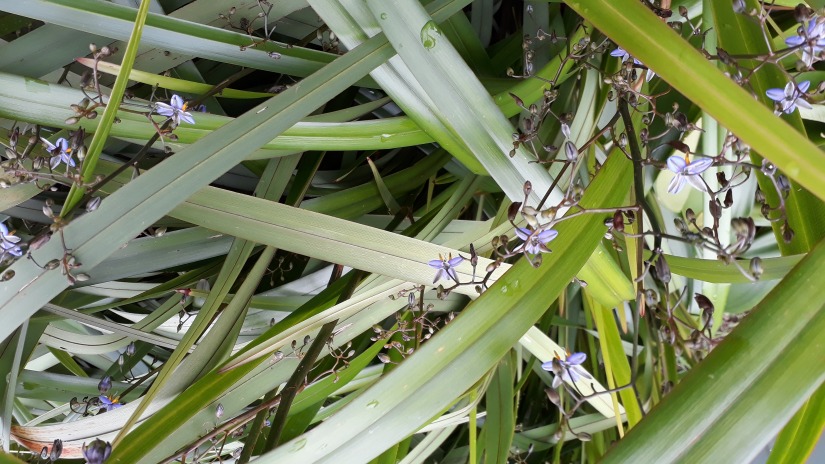
|
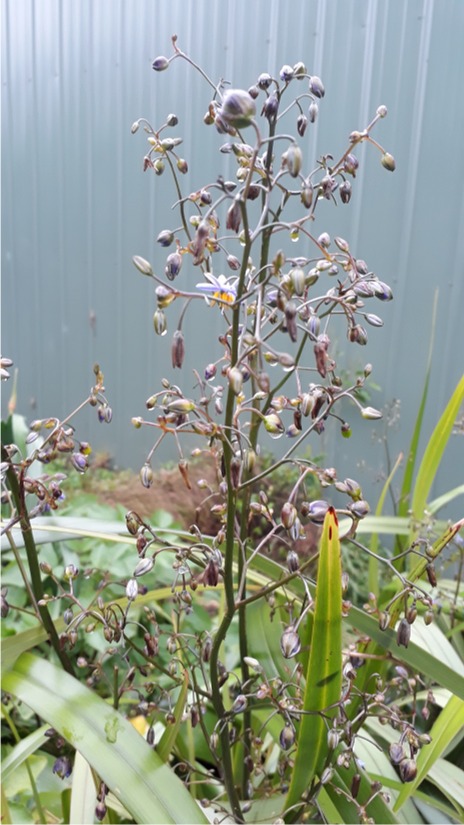
|
Photo shows plant and flower stem, long leaves if growing in good part shade conditions.
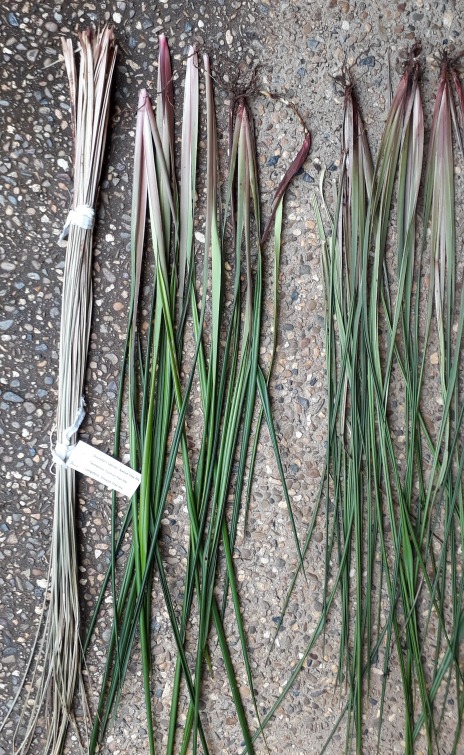
|
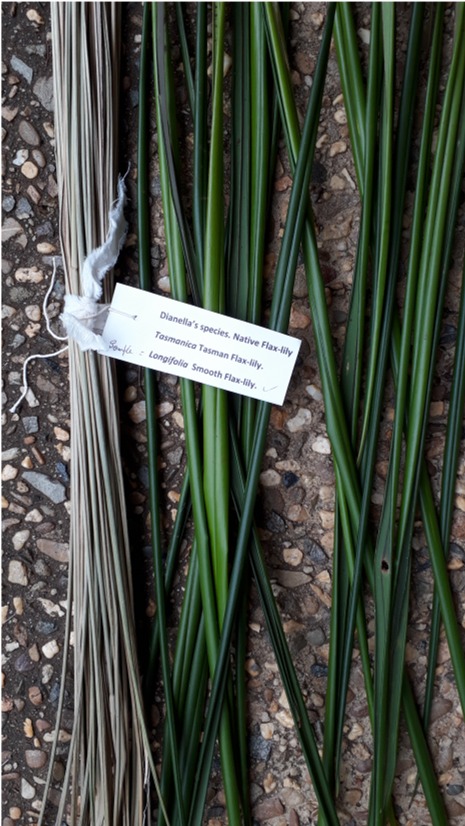
|
Photo shows one bundle dried and ready to store, others at various stages of drying, it is good material to use after 5+days drying in a warm dry place and split at the centre rib and when it starts to roll in and is still fresh.
Dianella tasmanica
The leaves of this form also gives me good length when grown in semi shade and has strong fibre. I find it a little tougher to use but will work well on something like a Melon Basket frame. You will need to prepare the leaves by splitting off the raspy edges and along the back rib as it can cut you. A few warm days in the sun also make this material very workable.
This can be a tougher leaf to work with if found growing in full sun, collect leaves growing in semi shade for best results. The leaf will have raspy edges and also down the back of the mid rib, these can be split off for ease of working with. Leaf is best to use when partly dried and edges have rolled in. Otherwise can be stored as per the photos and prepared by being resoaked in water and left to mellow in a towel when needed for weaving later on.
Diplarrena moraea, 'Butterfly Flag'
This lovely plant looks very well in full bloom as a garden plant in Sth Gippsland Vic, and the abundance of long thin leaves are excellent weaving material, it will become very soft and pliable if left in the sun for a couple of days before use.
This plant grows naturally in the states of Tasmania, Victoria and NSW. It is worth growing if you are a basket maker, the thin, flat leaves can grow to 70cm long in Victoria and the plant will form a clump about 30cm in diam, likes a sunny position in a moist soil to do well. You may have a friend who might share part of a clump with you, or try your local native plant nursery. Please do not dig them up in the bush. Collect the longest leaves and partly dry them by leaving them in a warm sunny spot for a few days, they will be very pliable for weaving or can be split and used to make string to weave with.
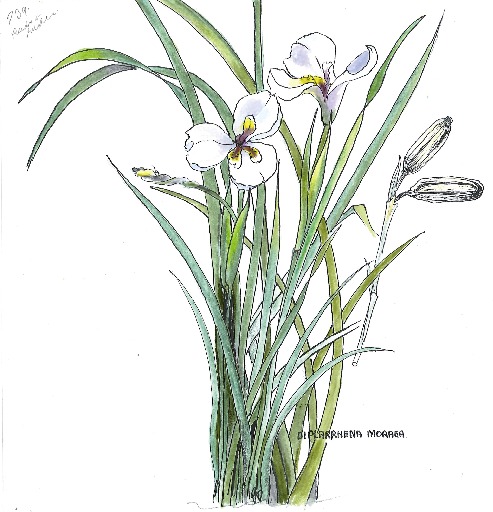
|
New Zealand Flax
Weaving is easier with the longest leaves you can get if you want to use flax for a larger project. The butt end of the Flax leaf is quite thick and needs a lot of scraping back if you want to use it...otherwise it is cut off. The N Z Flax material can be used green/fresh--- you will get a lot of shrinkage! which you learn to deal with that by 'scraping back' or 'breaking' are the terms used to remove as much moisture as you can before starting to weave.
You can 'prepare and split' the long leaves to about string thickness, if you hold the butt end and split up from there until the leaf is just strings store this fibre in loose coils leaving the butt end on, store and allow to dry in a dry place it can attract mildew in this state. When you want it for coiling or weaving... the fibre just needs a slight dampen to make it ready to work with.
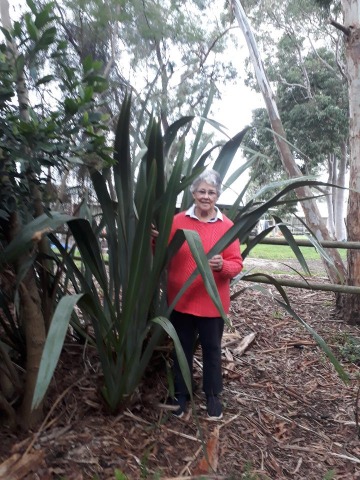
|
